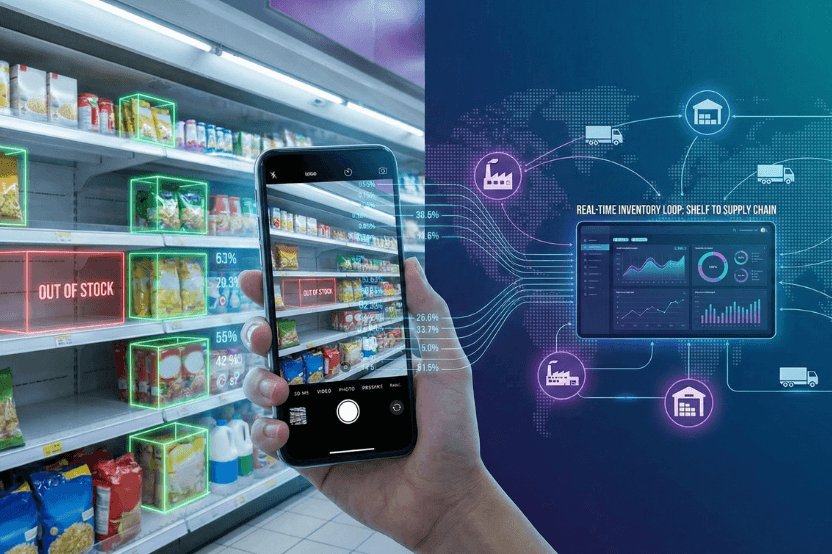Traditional Image Recognition is like trying to play football/soccer in running shoes. You can do it but you won’t perform at your best.
You’ll find it harder to get a reliable touch of the ball, and while you’ll be able to take part in a game, eventually you’ll become frustrated at the limitations. You’ll feel you could’ve done more with less effort. And you’ll probably end up buying football boots straight after the game.
We already know how high the bar is for CPG brands, traditional IR is already struggling to meet them, and won’t be able to do so at all soon.
Limited datasets and difficult integration that hinders rapid expansion of SKUs. Human biases seeping into datasets, reinforcing societal biases, which lead to incorrect outcomes. The need to hire more people, at great expense, to ensure the process has a chance of running smoothly. And these are only a few of the many direct and indirect issues that crop up.
However, AI has provided an opportunity for you to make the lives of CPG brands easier, with less effort. This in turn will make your working life a more stable, enjoyable experience.
In this blog post we’ll explain why AI will help you become the go to person for CPG brands when they need someone to ensure their supply chain and field marketing operations run smoothly.
What is Synthetic Data? What are its Benefits?
To put it simply, Synthetic Data is generated by computer algorithms rather than real world scenarios. It can be used to train Synthetic Computer Vision (SCV) models to detect real world objects. They can be used to simulate store environments, and customer/SKU interaction.
Once you start using Synthetic Data, for your IR, you'll come across the following benefits:
- Cost Effective
- Easier to scale
- More accurate
- Takes less time to implement into your systems
The infographic below shows the contrast between the two types of image recognition.

How Traditional Image Recognition Holds You Back
As a FFM or FMA, you’re generally judged on the following tasks:
- Shelf KPIs (Share of Shelf, Out of Stock, etc.)
- In-store location of products
- Planogram compliance (shelf location, # of facings, # of SKUs, missing/inaccurate shelf tags)
- Quality of in-store displays and promotional materials execution
- Competitor adjacencies and activity
- Pricing compliance
These are made a lot harder by the limitations of traditional IR. For example, if a CPG client wanted to quickly scale their SKU onboarding it would be a drawn out, inefficient, and inaccurate process. The delays can contribute to CPG brands having to push back their marketing schedules, causing them to miss quarterly targets. It gets even worse if you’re trying to do this all manually, it’ll be a much slower, inaccurate and more difficult process as a result.
This ratchets up the pressure on you, which is already high. Another example, the lower level of accuracy of traditional IR means that Shelf KPIs won’t be what they should be. As a result, OOS will be more likely to occur, and bias from data capture can negatively influence in-store marketing campaigns.
So now, CPG brands are turning up the heat, because their following metrics are falling as a result of the issues with traditional Image Recognition:
- Footfall
- Store revenue
- ROAS
- ATV
The data isn’t fit for purpose. The products aren’t in sync with consumer trends. The marketing activation is ineffective.
Why Synthetic Image Recognition Helps CPG Brands
But if you were to use Synthetic IR, you wouldn’t have these issues and CPG brands would enjoy the following benefits, all because of you:
- Increased brand loyalty
- Increased brand advocacy
- Higher AOV/ATV
- Higher LTV
- Higher per store profitability

Customers on shop floors or at home for ecommerce will now find that it’s much easier to get the items they want, when they want, at the prices they want.
Why? Because the high level of accuracy of Synthetic IR means that the dreaded OOS (from a consumer perspective) is less likely to happen, as it’s much easier to track SKU availability in real time. The technology enables these processes to be completed accurately, and at scale.
Utilising Synthetic Data enhances retail execution, which makes it much easier to provide customers with personalised experiences across the retail spectrum. This leads to a more harmonious business relationship between you and CPGs.
Neurolabs Case Studies
Of course, we understand your scepticism of us saying it, our company is based on technology after all. Here are our case studies showing real world evidence of the power of Synthetic Data fueled Image Recognition.
- Sagra - Find out how AI improved their shelf recognition process.
- IPP - See how we transformed IPP’s Shelf Auditing.
- Akcelita - They came to us and were able to do exactly what we’re talking about in this blog post - improved Image Recognition for their CPG clients.
- ITAB - Read about how they scaled their Shelf Monitoring Solution.
- Auchan Retail - See how they got rid of OOS.
- Uvesco - We helped them solve On-Shelf Availability with Synthetic Computer Vision.
See what Synthetic Data and Image Recognition Can Do For You
Get in touch with us today to request a demo/find out more information.

At Neurolabs, we are revolutionising in-store retail performance with our advanced image recognition technology, ZIA. Our cutting-edge technology enables retailers, field marketing agencies and CPG brands to optimise store execution, enhance the customer experience, and boost revenue as we build the most comprehensive 3D asset library for product recognition in the CPG industry.




